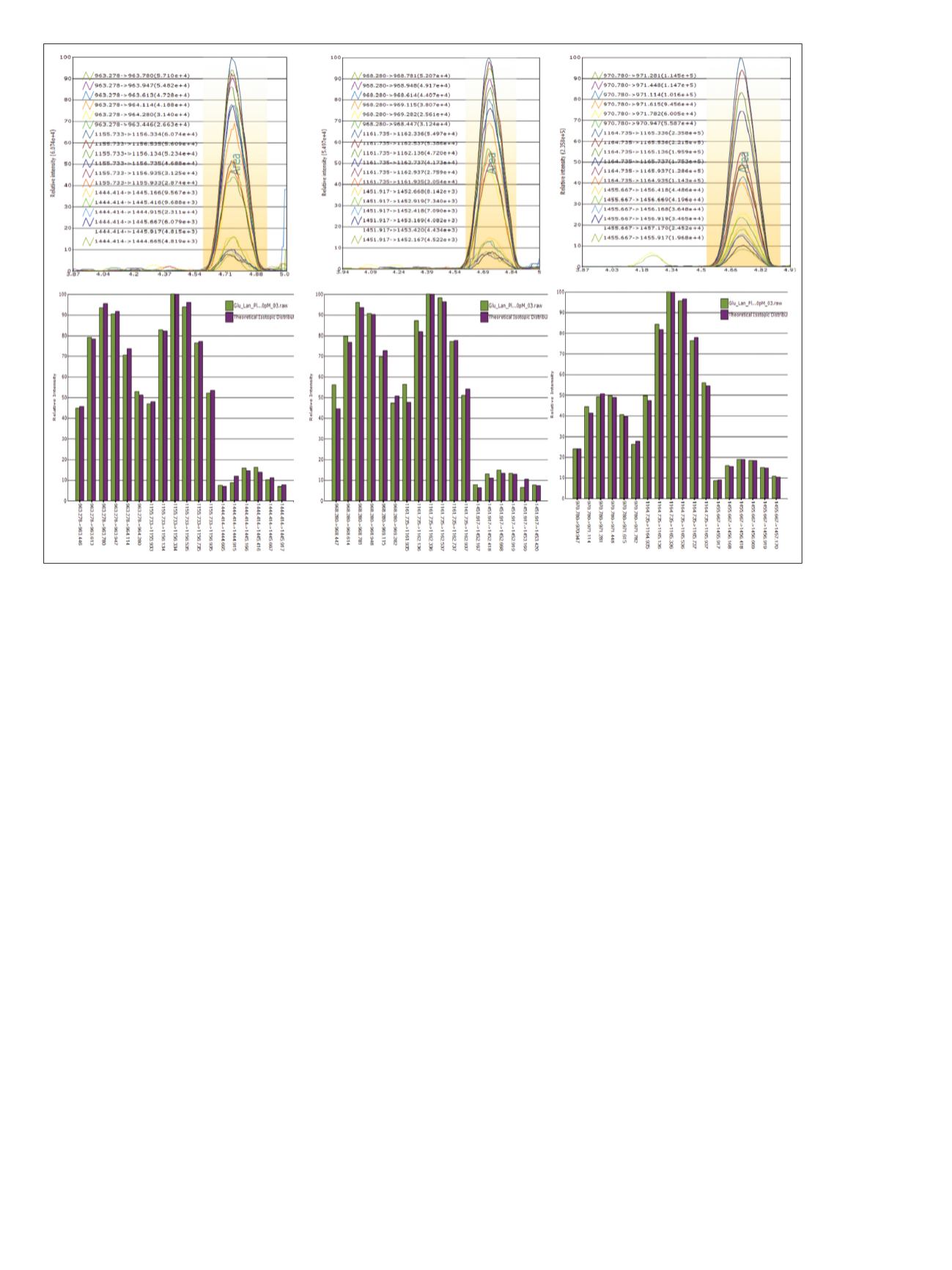

5
Quantitative Data Processing Strategy
Robust data processing and reporting incorporate both
qualitative and quantitative strategies. After data were
collected using the HRAM global acquisition method, a
Pinpoint software Main Workbook for the targeted
insulin sequences was created, the processing parameters
set, and the RAW files loaded for automated data
processing. This was performed in three steps. Figure 4
shows the list of insulin variant sequences imported from
a FASTA file containing all of the insulin variant
sequences. A FASTA file is a text-based format for
representing either nucleotide sequences or peptide
sequences, in which nucleotides or amino acids are
represented using single-letter codes.
The data analysis method provided an additional
dimension of qualitative scoring beyond the isotopic
distribution of a single charge state: the relative
distribution of precursor charge states. For example, the
measured abundances of the +5 and +6 charge states of
porcine and human insulin were nearly equivalent, while
the measured abundance of the +5 charge state of Apidra
was twice that of the +6 charge state. The +4 precursor
for all three showed relatively poor response and would
likely be excluded from the final quantitation method.
Figure 3. Comparative analysis of the three co-eluting insulin variants. Overlaid XICs for the six isotopes and three precursor charge
states per insulin variant for (3a) porcine, (3b) human, and (3c) Apidra. The isotopic distribution analysis for the collection of precursor
charge states and Pinpoint software calculated dot product correlation coefficients per charge state are shown.



















